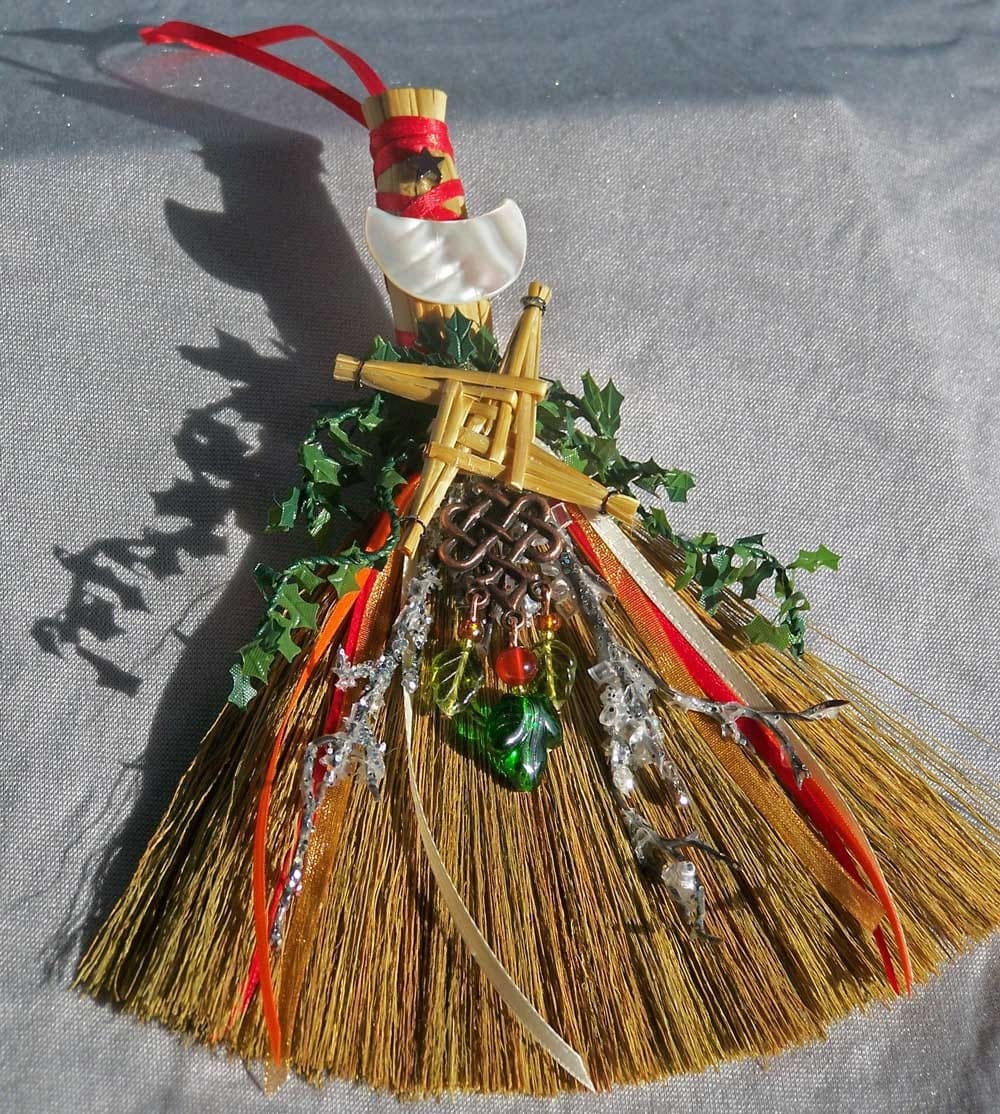Imbolc is now just over a week away (on February 2), so today's post is to share some background on the Sabbat, as well as give ideas of ways to observe it. (Please note that, as with all sabbats, the celebrations/observations traditionally begin at sundown on the night before, in this case, February 1.)
Background:
The First of February belongs to Brigid, (Brighid, Brigit, Bride,) the Celtic goddess who in later times became revered as a Christian saint. Originally, her festival on February 1 was known as Imbolc (pronounced "IM-bulk" or "EM-bowlk") or also called Oimealg, ("IM-mol'g), two names which refer to the lactation of the ewes, the flow of milk that heralds the return of the life-giving forces of spring. Later, the Catholic Church replaced this festival with Candlemas Day on February 2, which is dedicated to the Virgin Mary and features candlelight processions. The powerful figure of Brigid the Light-Bringer overlights both pagan and Christian celebrations.[
source link]
Brigid is the goddess not just of fire, but also of hearth and home, smithcraft (blacksmiths, goldsmiths, etc), poetry and creation, healing, women's health, and childbirth. She is an incarnation of the Maiden form of the goddess, and our word "bride" comes from her name.
Imbolc is the time of Blessing of the seeds and consecration of agricultural tools. It marks the center point of the dark half of the year. It is the festival of the Maiden, for from this day to March 21st, it is her season to prepare for growth and renewal. Brighid's snake emerges from the womb of the Earth Mother to test the weather, (the origin of Ground Hog Day), and in many places the first Crocus flowers began to spring forth from the frozen earth. [
source link]
 |
| Brigid's Wheel aka Brigit's Cross |
When Ireland was Christianized, veneration of the Pagan Goddess Brigid was transformed into that of St. Brigit, said to be the human daughter of a Druid... Pagan lore was incorporated into the Christian traditions and legends associated with Her as a saint. She was associated with miracles and fertility. Into the 18th century a women's only shrine was kept to her in Kildare (meaning Church of the Oak) in Ireland. There, nineteen nuns tended Her continually burning sacred flame. An ancient song was sung to Her: "Brigid, excellent woman, sudden flame, may the bright fiery sun take us to the lasting kingdom." [
source link]
According to
some sources, the Celts celebrated an early version of Groundhog Day on Imbolc too – only with a serpent, singing this poem:
Thig an nathair as an toll
(The serpent will come from the hole)
la donn Bride
(on the brown day of Bride (Brighid)
Ged robh tri traighean dh’an
(though there may be three feet of snow)
Air leachd an lair
(On the surface of the ground.)
Symbolism:
purity, growth, renewal, new beginnings, commitment/dedication, birth, creativity, healing, brides, virgins
Symbols:
white flowers, candles , torches, grains, seeds, acorns, plow, snakes, poetry, blacksmiths/goldsmiths,
Foods:
- poppyseed cakes or muffins
- breads, cakes, scones
- seeds (pumpkin seeds, sunflower seeds, etc)
- dairy products (milk, cheese, yogurt, etc)
Activities:
- On the evening before, each family member leaves one item of clothing outside for Brigid to bless. In the morning the clothing is brought back inside, with Brigid's blessing of healing and protection (see here).
- Make herbal salves, teas, or other healing things.
- Make your own butter.
- Read scriptures about light, the Light of Christ, candles, or fires, as well as the things they stand for (testimony, example, etc) (Matt 5 is a good place to start)
- Sing hymns or other songs about light, such as Pass it On.
- Use straw to make a Brigid's Wheel, or a broom, to hang on or above your door to bless your home
- Make fire starters
- Make a Brighid's Crown or a Priapic Wand.
- Go outside and encourage things to grow, perhaps while waving your priapic wand, and/or with a verse like this "Wake, wake, plants in the earth, / spring is a time of light and rebirth. / Hear, hear this magical sound, / and grow, grow, out of the ground."
- Sweep out your home to cleanse and purify it.
- Clean your fireplace/hearth and sweep out the ashes
- Write or read poems
- Since Brigid is the goddess over childbirth, share the birth stories of family members together
- Candlemas is the day when the Catholic Church blesses their candles for the year. If you use candles in your home (especially if you use them for spiritual purposes) you might consider blessing them.
- Light candles.
- Make candles! or Ice candles.
- Have a candlelit meal with your family
- If any early flowers have come up where you life, bring some inside.
- If you grow a garden, this might be a good day to start your seeds indoors.
- Plant a garden of healing herbs.
- Help at or donate to a women's shelter, women's health organization, or pregnancy/childbirth support group.
- (if you have other ideas, please share them in the comments!)
Source links:












